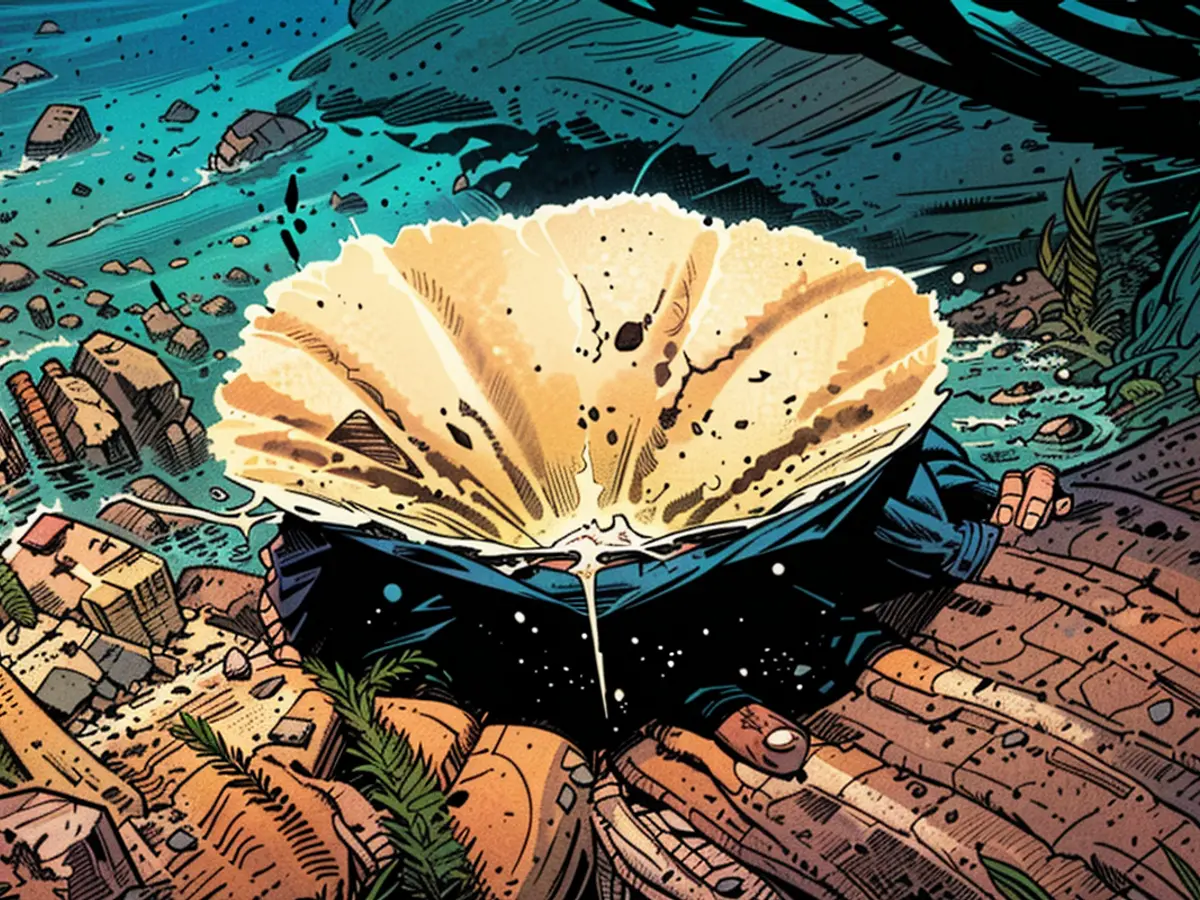- Sponges in New Zealand massively bleached
Not only corals can bleach, but also sponges are affected. In 2022, researchers discovered a particularly large mass bleaching of sponges in New Zealand's Fiordland: Around 66 million marine sponges were affected.
The population of the sponge species Cymbastella lamellata settled there was estimated to have been reduced by almost half along the approximately 1,000-kilometer-long coastline, according to a study by the researchers. "This was not only the largest sponge bleaching ever observed worldwide, but also the largest sponge mortality ever recorded," says marine biologist James Bell of Te Herenga Waka - Victoria University of Wellington, the lead author of the study.
During a heatwave that lasted 259 days, the bleaching occurred, causing water temperatures to rise by up to 4.4 degrees Celsius above average. As a result, the shell-like animals changed their color: from a dark brown to a light white. Around 20 percent of the sponges along the coast were completely bleached, 75 percent were partially bleached, and only 5 percent were unaffected.
"Sponges form symbioses with a wide variety of organisms, from diatoms to crustaceans and zoanthids to a very large diversity of microorganisms," explains Bell. The relationships with microbes are particularly important, as it is assumed that they help the sponge to survive - especially under stress conditions.
Diatoms give color
Similar to coral bleaching, the sponge loses diatoms from its tissue that give it its color under normal conditions. Whether the bleaching also directly leads to the death of the sponges is not yet certain, explains Bell. It is possible that the sponges were eaten by fish because they became more palatable or were easier to see.
The researchers also found that some sponges were able to recover from the bleaching. "This gives us hope that sponges may be able to adapt to the warming of the water," says Bell. Because heatwaves in the sea are becoming more frequent and intense due to climate change, which has significant impacts on marine life, write the scientists.
The bleaching of corals and sponges shares similarities, as both can lose their colorful diatoms under stressful conditions. Moreover, the massive bleaching event in New Zealand's Fiordland affected not only corals but also resulted in the loss of diatoms from millions of sponges, potentially making them more palatable for predators.







